Puffy Eyelids After Botox: 3 Effective Ways to Get Rid of Unwanted Swelling
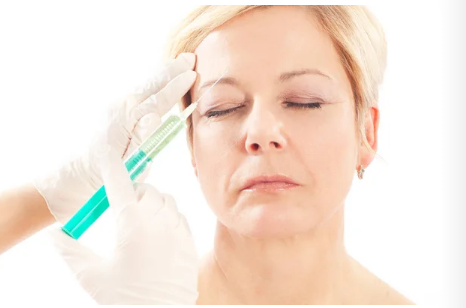
Puffy eyelids after botox usually resolve independently within a few days or weeks. However, in some rare cases, the puffy eyelids may be permanent. There are many possible side effects of botox, one of which is puffy eyelids.
This occurs when the botox spreads beyond the injection site and causes the muscles around the eye to weaken. As a result, the skin around the eye becomes loose and can sag, causing the eyelid to appear puffy.
SWELLING AFTER BOTOX FOREHEAD TREATMENT: A CAUSE FOR ALARM?
Swelling after Botox forehead treatment is not uncommon. It’s one of the most common adverse effects of the procedure. The swelling usually begins within the first 24 hours after treatment and typically lasts two to three days. In some cases, swelling can last up to a week.
While most cases of swelling after Botox are mild and resolve independently, there are a few rare instances where the swelling can be more severe.
It usually results from the dermal filler used in the treatment. However, if the swelling persists for over two weeks or is accompanied by redness, itching, or pain, you should consult a doctor.
CAN BOTOX CAUSE DROOPY EYELIDS?
The cosmetic treatment Botox has become increasingly popular with individuals of all ages and genders using it to achieve a more youthful appearance. But as with any medical treatment, there are potential side effects that come with Botox injections. The most typical negative impact is droopy eyelids, which can occur when the Botox spreads beyond the injection site.
While droopy eyelids may not be a severe medical condition, they can be a nuisance and make it challenging to apply makeup or see clearly.
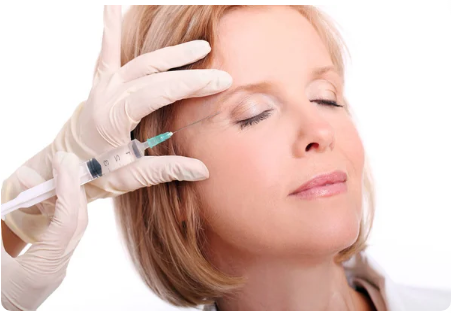
What Should I Do If I Have Droopy Eyelids After Botox?
If you have droopy eyelids after Botox, You can take a few actions and fix the problem. First, you can massage the area around your eyes. This may help loosen the muscles and allow the eyelids to return to normal.
Try doing some gentle exercises to strengthen the muscles around your eyes. Another option is to use ice packs or cold compresses. This can help to reduce any inflammation and swelling that may be causing the droopy eyelids.
In rare cases, Botox can cause temporary paralysis of the muscles around the eyes. If this happens, you may need to wait for the effects of the Botox to wear off before the droopy eyelids improve. If these methods don’t work or the droopy eyelids are severe, you may need to see a doctor.
- In more severe cases, surgery may be necessary to correct droopy eyelids. This surgery, known as blepharoplasty, removes excess skin, muscle, and fat from the eyelids. It is typically a safe and effective procedure but carries risks and potential complications like any surgery.
You can take a few actions if you have droopy eyelids after Botox: - Try not to frown or squint, as this can worsen the appearance of frown lines.
- Use a quality skin care product to help keep your skin looking its best.
- If your upper eyelid droops significantly, you may need to consult a doctor to discuss other treatment options.
NONALLERGIC EYELID EDEMA AFTER BOTULINUM TOXIN TYPE A INJECTION
Botulinum toxin type A (BTX-A) is a popular treatment for various conditions, including wrinkles, excessive sweating, and muscle spasms. However, BTX-A injections can sometimes cause side effects, such as eyelid edema.
Eyelid edema is a disorder where the eyelids swell up due to fluid build-up. Several things, including allergies, infections, and trauma, can cause it. In some cases, BTX-A injections can trigger an allergic reaction that leads to eyelid edema.
If you develop eyelid edema after a BTX-A injection, it is crucial to see a doctor immediately. Treatment will vary depending on the cause of the edema but may include oral or topical steroids, antihistamines, and cool compresses to help reduce swelling.
It is important to note that eyelid edema may also be a side effect of BTX-A injections, especially if they are not administered properly. This is why it is crucial to only receive BTX-A injections from a licensed and experienced healthcare provider.
In rare cases, severe eyelid edema may require medical intervention to prevent complications such as vision problems or infections. It is critical to get medical help immediately if you experience worsening symptoms or discomfort.
To prevent eyelid edema from occurring after BTX-A injections, follow all pre- and post-injection instructions provided by your healthcare provider. This may include avoiding certain medications or activities that could increase the risk of edema, such as rubbing or touching the treated area.
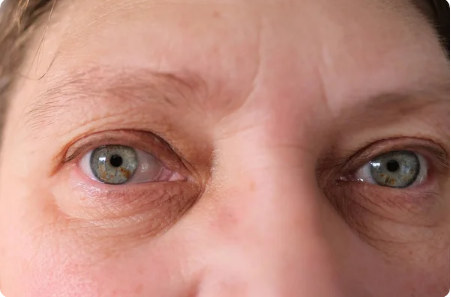
WHAT EXACTLY IS BOTOX?
Botox is injected into the skin to improve the appearance of wrinkles. It is a medication that temporarily paralyzes the muscles that cause wrinkles. Also, commonly used on the face but can also treat other body areas, such as the neck, hands, and underarms.
Botox is a safe and effective treatment approved by the FDA for cosmetic procedures. Botox treatments typically last four to six months, and the results are usually visible within a week. Having your system checked by a qualified professional dermatologist or plastic surgeon is essential.
WHAT CAUSES DROOPY EYELIDS AFTER BOTOX TREATMENT?
There are a few possible causes for droopy eyelids after Botox treatment. One possibility is that Botox was injected too close to the eyelid muscle. This can cause the power to weaken and the eyelid to droop. Another option is that Botox was injected into the wrong strength. This can also cause the eyelid to droop.
Finally, the person may have a natural tendency for their eyelids to sag after being injected with Botox. This is more common in people who have naturally droopy eyelids.
WHY DO PEOPLE EXPERIENCE SWELLING AFTER BOTOX FOREHEAD TREATMENTS?
Swelling after Botox forehead treatments is a common side effect that usually lasts a few days. Botox causes swelling injected into the muscles around the treatment area. As the muscles relax, they may cause the skin to appear puffy or swollen. Most people experience some swelling, but it should not be severe.
While swelling is a common side effect, it can be uncomfortable for some people. If you are concerned about the swelling, consider using a cold compress to minimize the swelling. You can also take over-the-counter anti-inflammatory drugs, such as ibuprofen, to help reduce the swelling.
TAKE STEPS TO PREVENT EYELID DROOP
If you have ever had eyelid droop, you know how frustrating it can be. Several things, including genetics, aging, and certain medical conditions, can cause the illness. Regardless of the cause, there are steps you can take to prevent eyelid droop from happening.
To prevent eyelid droop, you should avoid rubbing your eyes. It would help if you also tried to sleep with your head elevated, preventing fluid retention. It would also help to eat a healthy diet and stay hydrated. If you are susceptible to eyelid droop, these steps can help you prevent it from happening.
Another critical step in preventing eyelid droop is to protect your skin from sun damage. Sun damage can cause skin laxity and accelerate aging, contributing to eyelid droop. Wear sunscreen and sunglasses outside, and avoid prolonged sun exposure.
If you already have eyelid droop or are experiencing other symptoms, such as blurred vision, double vision, or difficulty opening your eyes, it is crucial to see a doctor. Depending on the cause of your eyelid droop, treatment options may include medications, surgery, or other therapies.
In some cases, eyelid droop may be a sign of a more serious underlying condition, such as nerve damage, a brain tumor, or a disorder of the muscles or nervous system. If you are experiencing eyelid droop or other symptoms that concern you, do not delay seeking medical attention. Early detection and treatment can reduce complications and improve overall health and well-being.
If you are diagnosed with ptosis, the most common treatment is surgery to lift and tighten the affected eyelid. This surgery, called blepharoplasty, is often performed on an outpatient basis and involves making small incisions in the eyelid to trim away excess skin and tighten the underlying muscles. Recovery time is generally a few weeks, during which you must avoid straining or overusing the affected eyelid.
Other treatment options may depend on the underlying cause of your eyelid droop. For example, if your ptosis is caused by nerve damage, your doctor may suggest physical therapy or electrical stimulation to help strengthen the affected muscles. If you have a brain tumor or other serious condition, you may need more extensive treatment, such as chemotherapy, radiation therapy, or surgery to remove cancer.
In summary, if you are experiencing eyelid droop or other symptoms that concern you, see a doctor immediately. Early diagnosis and treatment can reduce complications and improve overall health and well-being.
SCHEDULE A CONSULTATION
Schedule a consultation to learn about the causes of puffy eyelids after botox and get expert advice on the best course of treatment. At a consultation clinic, they will:
– Thoroughly assess your case to determine the root cause of your puffy eyelids
– Create a treatment plan tailored to your unique needs
– Provide any questions you may have regarding the treatment process
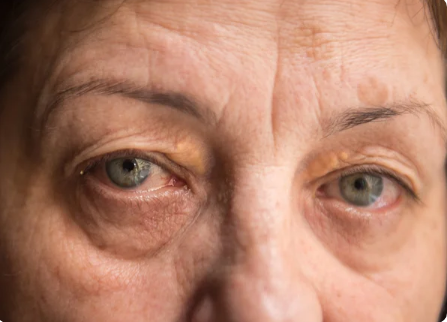
What do you say at a plastic surgery consultation?
Plastic surgery is a decision that must be made; if you are considering surgery, scheduling a consultation with an is the first action taken board-certified plastic surgeon. The surgeon will evaluate your goals and concerns during your consultation and develop the right treatment plan.
It is crucial to come to your consultation prepared with questions and information. Below are some questions you may want to ask during your consultation:
– What are the risks and probable complications of the surgery?
– What is the surgeon’s experience with this particular procedure?
– What are the expected results of the surgery?
– How long will the results last?
– What, if any, non-surgical options are available to me?
– What are the costs of the surgery and associated fees?
Your consultation is also a time to ask questions about the surgery or the recovery process. Feeling comfortable with your surgeon and having your questions answered before proceeding with surgery is essential.
How Much Does Eyelid Surgery Cost?
While the cost of eyelid surgery will vary from surgeon to surgeon, the average cost of the procedure is $3,026, according to the American Society of Plastic Surgeons. This price does not include the cost of anesthesia, typically around $600.
The cost of eyelid surgery will also depend on the extent of the surgery. If you only have upper eyelid surgery, the average price is $2,526. The average cost for upper and lower eyelid surgery is $3,526.
Of course, the cost of the procedure will vary depending on the surgeon you select, the location of the surgery, and the type of surgery you have. However, generally, you can expect to pay between $2,000 and $4,000 for eyelid surgery.
One of the most common cosmetic treatments of the American Society of Plastic Surgeons is eyelid surgery. If you are thinking about getting eyelid surgery, you are not alone. Learn more about the cost of eyelid surgery and how to save money on the procedure.
Factors Affecting Eyelid Surgery Cost
1. Surgeon’s Experience and Reputation: The more experienced and renowned the surgeon, the higher the procedure cost.
2. Complexities of the Procedure: The more complex the procedure, the higher the cost.
3. Surgical Facility: The cost of the facility and surgical fees can significantly increase the overall cost of the procedure.
4. Geographic Location: The procedure’s cost varies depending on the surgery’s location. Major cities tend to offer more expensive systems.
5. Type of Eyelid Surgery: The surgery cost will depend on whether you have upper or lower eyelid surgery and whether excess tissue removal or fat repositioning is required.
6. Insurance Coverage: Your insurance may partially cover eyelid surgery if deemed medically necessary due to vision impairment.
How to Save Money on Eyelid Surgery
1. Research and Compare Surgeons: Research and compare multiple surgeons to find one that fits your needs and budget. Be sure to look at reviews and testimonials from previous patients.
2. Financing Options: Many surgeons offer financing options, such as installment payments or medical credit cards, to make the procedure more affordable.
3. Consider Alternatives: There are non-surgical alternatives to eyelid surgery, such as Botox and dermal fillers, that may be less expensive.
4. Insurance Coverage: If your eyelid surgery is deemed medically necessary, it may be partially covered by your insurance.
5. Medical Tourism: Many people travel abroad for cheaper cosmetic procedures but research the facility’s and surgeon’s safety and reputation before making any decisions.
6. Consultation: Schedule a consultation with your chosen surgeon to discuss the procedure and any potential risks and get an accurate quote for the cost.
7. Follow Pre- and Post-Operation Guidelines: Following your surgeon’s pre- and post-operation guidelines can help ensure the best results and minimize complications, saving you money in the long run.
8. Recovery Time: Be aware that recovery time can vary from person to person, affecting your ability to work and perform daily activities. Plan accordingly and consider how this may impact your finances.
9. Aftercare Costs: Eyelid surgery may also require aftercare treatments, such as medications, compresses, or follow-up appointments, which can add to the overall cost.
10. Long-Term Results: Remember that eyelid surgery is a long-term investment, and the results can last for many years. Consider whether the expense is worth it for the long-lasting benefits.
Statistics
More than 4 million people have had eyelid surgery in the United States. The most common procedures are eyelid lifts (blepharoplasties) and eyelid tumors (ptosis). Other standard procedures include tear duct surgery, orbit surgery, and cosmetic facial surgery.
Eyelid lifts are typically done to remove excess skin and fat from the upper or lower eyelids, which can cause sagging, puffiness, and wrinkles. Ptosis surgery is done to correct droopy eyelids, which can interfere with vision and cause a tired or grumpy appearance.
Tear duct surgery is done to repair a blocked or damaged tear duct, which can cause excessive tearing, discomfort, and even infection. Orbit surgery treats conditions that affect the bones and tissues around the eye, such as fractures, tumors, and inflammation.
Cosmetic facial surgery may involve eyelid surgery as part of a more significant procedure, such as a facelift or brow lift. These surgeries improve the appearance of the face by tightening sagging skin, smoothing wrinkles, and restoring facial contours.
Eyelid surgery is often outpatient, and patients can typically return to normal activities within a week or so after surgery. Nonetheless, there are risks associated with any surgery, including infection, bleeding, scarring, and changes in vision or appearance.
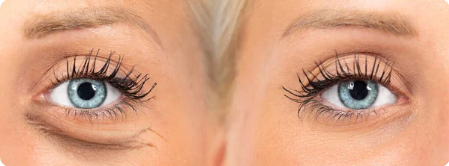
ARE THERE OTHER SIDE EFFECTS OF BOTOX?
Most people are aware of the cosmetic benefits of Botox, but did you know there are other potential side effects of this popular treatment? While Botox is generally safe, you should be aware of some rare but possible side effects.
Botox can sometimes cause drooping of the eyelids. This is usually temporary and will resolve independently, but it may require medical intervention in rare cases. There have also been reports of temporary weakness in the muscles of the face, neck, and upper body. This is usually mild and goes away within a few days.
In rare cases, more severe side effects such as difficulty swallowing or speaking, persistent muscle weakness, and allergic reactions can occur.
HOW ARE DROOPY EYELIDS TREATED?
There are a few different ways that doctors can treat droopy eyelids. First, they can prescribe eyedrops to help improve the symptoms. They may also recommend eye exercises to help strengthen the muscles around the eyelids. Surgery may sometimes be necessary to remove excess skin or fat from the eyelids.
Regardless of the treatment, it is crucial to see a doctor if you are experiencing droopy eyelids. This condition can sometimes be a sign of a more severe problem, so it is best to get it checked by a professional.
WHEN TO BE WORRIED?
If the windows to your soul are your eyes, then your eyelids are the shutters. And just like any other feature on your face, they can show signs of wear and tear with age. But unlike other facial features, you can’t cover them with makeup or wrinkle cream.
The good news is that there are medical treatments to help improve the appearance of your eyelids. One of the most popular treatments is botox. However, like with any medical treatment, there are some risks involved.
One of the adverse side effects of botox is puffy eyelids. This can occur when the botox migrates from the injection site. While this is not a severe side effect, it is crucial to understand the potential risks. Learn when to be worried about puffy eyelids after botox.
Firstly, it is essential to note that some swelling is normal after receiving any type of injection, including botox. This is typically mild and will resolve independently within a few days. Yet if the node is excessive or lasts for an extended period, it may indicate a more severe complication.
If you notice significant puffiness or swelling in your eyelids after receiving botox, it is essential to contact your healthcare provider immediately. They will likely recommend an evaluation to rule out any underlying medical conditions causing the swelling.
In some cases, the migration of botox may cause the muscles in the eyelids to weaken, which can lead to drooping around the eyes. This condition, known as ptosis, may require additional treatment to correct.
Overall, while puffy eyelids after botox are not typically a cause for concern, monitoring any swelling or other symptoms and reporting them to your healthcare provider as soon as possible is crucial. They can offer guidance on managing any side effects and ensure you receive the appropriate care.
ANSWERS
- Puffy eyelids are a common side effect of botox injections. The condition is usually temporary and resolves itself within a few weeks. However, in some cases, puffy eyelids can indicate a more severe disease called eyelid drooping.
Botox is a trendy cosmetic procedure used to reduce the appearance of wrinkles. It is a secure and reliable method to achieve a more youthful appearance. However, like all procedures, some side effects can occur. One of the most adverse side effects is puffy eyelids.
- Puffy eyelids can
- occur for several reasons:
- Botox may have been injected too close to the eyelid.
- Botox may have been injected too deep into the skin.
- The person may be allergic to Botox.
- The person may have had a previous reaction to Botox.
If you are experiencing puffy eyelids after Botox, you can do a few things:
Consider using a cold compress for the area. This will help reduce the swelling.
Try using an over-the-counter antihistamine. This will help if you are experiencing an allergic reaction.
If the puffiness is severe, you may need to see a doctor to have the Botox reversed.
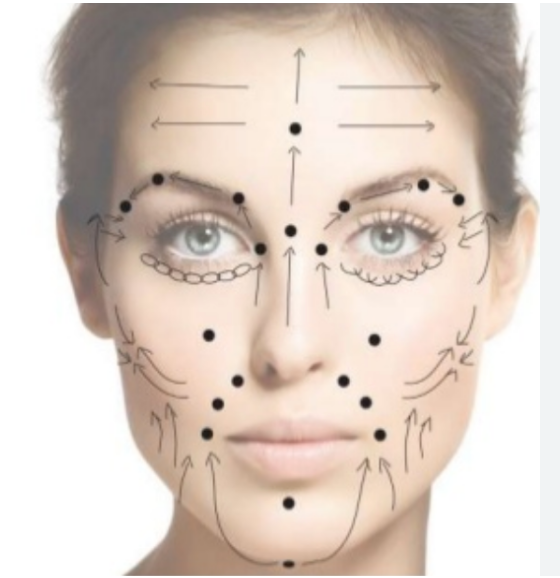
ALLERGY REACTIONS
The allergic reaction is caused by the botulinum toxin, a protein used to paralyze muscles. The bacterium Clostridium produces the toxin botulinum. Puffy eyelids are a common side effect after botox injections.
After being injected with the botulinum toxin body, it causes an immune reaction. The body creates antibodies to combat the poison. The reaction can cause several symptoms, including swelling, redness, itching, and difficulty breathing. In severe cases, the response can lead to life-threatening anaphylaxis.
If you are among the millions of people who suffer from allergies, you know they can be a real pain. Allergy reactions can cause a runny nose, itchy eyes, hives, and difficulty breathing. And if you’re unlucky enough to have a severe reaction, you could end up in the hospital.
Additionally, If you’re allergic to pollen, you’re probably all too familiar with the symptoms: runny nose, itchy eyes, sneezing, and general misery. But did you know that pollen can also cause puffiness around your eyes? It’s true! Pollen can cause the blood vessels in your eyelids to swell, which leads to that familiar “puffy eye” look.
This condition, known as allergic conjunctivitis, affects millions of people yearly. It occurs when pollen or other allergens come into contact with the lining of your eyes, causing inflammation and irritation. The puffiness around your eyes may also be accompanied by redness and itching.
If you suffer from puffy eyes, numerous ways exist to treat allergies and alleviate the symptoms. First, try to avoid exposure to pollen as much as possible. Stay indoors on windy days, keep windows closed, and use an air filter to remove pollen.
You can also use over-the-counter antihistamines or decongestants to help reduce inflammation and relieve symptoms. The eyes can benefit from a cold compress also help reduce swelling and soothe irritated skin.
BAD BOTOX
If you’ve ever had Botox, you know it’s not pain-free. Needle injections can cause a fair amount of discomfort. But most people will endure pain to look younger and more refreshed.
Unfortunately, not all Botox experiences are pleasant. After getting the injections, people have reported bad reactions, such as puffy eyelids. Considering Botox, you must know the potential risks and side effects of everything and some people’s bad reactions to Botox injections.
Possible Side Effects of Botox
Before we dive into the specifics, it’s essential to understand that Botox is a safe treatment option for reducing wrinkles and fine lines. However, like any medical procedure, it has some risks. Here’s a rundown of some of the potential side effects of Botox injections:
1. Pain and Discomfort
As mentioned earlier, Botox injections involve needle punctures, which can be uncomfortable for some people. However, the pain is usually minimal and subsides shortly after the injection.
2. Swelling and Bruising
It’s common to have some swelling or bruising around the injection site. This is typically mild and resolves within a few days.
3. Headaches
Some people experience headaches after getting Botox injections. These headaches are usually mild and temporary.
4. Eyelid Drooping
Eyelid drooping, or ptosis, is a rare but potentially severe complication of Botox injections. It happens when the Botox spreads beyond the targeted muscles, causing weakness in the eyelid muscles. This can result in a droopy or puffy appearance of the eyelids.
5. Allergic Reactions
People with a history of allergic reactions may experience an allergic reaction to Botox injections. Symptoms may include itching, rash, swelling, and difficulty breathing.
6. Other Side Effects
Other potential side effects of Botox injections include dry mouth, fatigue, flu-like symptoms, and nausea.
What Causes Puffy Eyelids After Botox?
While puffy eyelids are not a common side effect of Botox injections, they can still occur. There are several possible causes of puffy eyelids after Botox, including:
1. Incorrect Injection Technique
If Botox is not injected correctly, it can spread to the surrounding tissues, including the eyelids, causing them to become puffy.
2. Allergic Reaction
An allergic reaction to Botox can cause swelling in the eyelids, which can be severe in some cases.
3. Medical Conditions
Certain medical conditions, such as thyroid problems or allergies, can cause eyelid puffiness. If you have a preexisting medical condition, you must inform your doctor before getting Botox injections.
How to Avoid Puffy Eyelids After Botox
Choosing a qualified and experienced injector with a good reputation is crucial to minimize the risk of developing puffy eyelids after Botox injections. Also, discuss any preexisting medical conditions or allergies with your doctor before getting the injections. Finally, follow all post-treatment instructions carefully and avoid rubbing or touching the injection site.
While Botox injections are generally safe and effective, they can cause some side effects, including puffy eyelids. By understanding the potential risks and taking the necessary precautions, you can minimize your chances of experiencing adverse outcomes and enjoy the benefits of a more youthful-looking appearance.`
BROWSE POPULAR QUESTIONS
1. How does botox work?
Botox is a neurotoxin that can temporarily paralyze the muscles in the face. This can help to reduce the looks of wrinkles, as well as stop new wrinkles from forming.
2. How long does botox last?
Botox usually has a 3- to 4-month aftereffect. Yet, it can vary from person to person.
3. What are the side effects of Botox?
The most adverse side effects of botox include the following:
Temporary pain or swelling at the injection site.
Headache.
Dry eyes.
Drooping of the eyelid or eyebrow.
Flu-like symptoms.
Rare side effects include allergic reactions, difficulty breathing or swallowing, and muscle weakness.
4. What areas of the face can botox treat?
On the forehead, wrinkles and other lines can be treated by Botox between the eyebrows (also known as the “11” lines) and around the eyes (crow’s feet). It can also contour the jawline and treat excessive sweating in areas like the underarms.
5. How long does it take for botox to take effect?
Botox takes 3-5 days to take effect, with full results visible within 7-10 days after the injection. Individual results may differ; it is crucial to remember that.
6. Botox and puffy eyelids – what’s the connection?
If you’re considering getting Botox to help with puffy eyelids, you may wonder how the two are connected. Botox is a cosmetic treatment that can improve the look of wrinkles and fine lines. It temporarily paralyzes the muscles in the treated area, giving the skin a smoother, more youthful appearance.
Puffy eyelids are often caused by excess fluid in the area, resulting from many factors, including allergies, aging, and hormonal changes. While Botox will not directly reduce the amount of fluid in the area, it can help improve the eyelids’ appearance by relaxing the muscles that can contribute to puffiness.
7. How long do puffy eyelids last after botox?
Typically, patients can expect to see results from botox injections within a week. However, the duration of botox’s effects will vary from person to person. For some people, the effects of botox may last for several months. Factors affecting how extended botox stays include the amount of botox injected, the muscle group infiltrated, and the individual’s metabolism.
8. Is there anything you can do to reduce swelling?
If you have ever had botox, you know there is always a risk of looking slightly puffy immediately after the procedure. This is because the botox injects a small amount of fluid into the area around the eyes, which can cause the site to swell.
You can do a few actions to reduce the swelling and ensure you look your best. First, apply a cold compress to the area for a few minutes daily. Try sleeping with your head elevated to help reduce the swelling. Finally, avoid strenuous activity for the first 24 hours after the botox injection.
9. When should you see a doctor?
If you have puffy eyelids after botox, you may wonder when you should see a doctor. Botox is a cosmetic treatment that can help reduce the appearance of wrinkles. However, it is not without side effects. One of the most adverse side effects is temporary puffiness of the eyelids.
In most cases, the puffiness will resolve within a few days. In rare cases, botox can cause permanent damage to the nerves or muscles around the eye.
10. Botox and puffy eyelids – key takeaways:
EYE doctors recently started using botox to fix puffy eyelids. Here are key takeaways from a recent article on the topic:
According to the article, botox can improve the appearance of puffy eyelids by temporarily paralyzing the muscles that cause puffiness.
The article also states that botox is a safe and effective treatment for puffy eyelids and that the results are usually temporary, lasting about three to six months.
They will be able to assess your situation and advise you on whether botox is the best option or whether another treatment would be more suitable. Additionally, be aware of botox’s potential risks and side effects, including drooping eyelids, dry eyes, and infection.
Also, it’s critically important to have realistic expectations about botox results. While it can significantly reduce the appearance of puffy eyelids, it may not eliminate the problem in all cases.
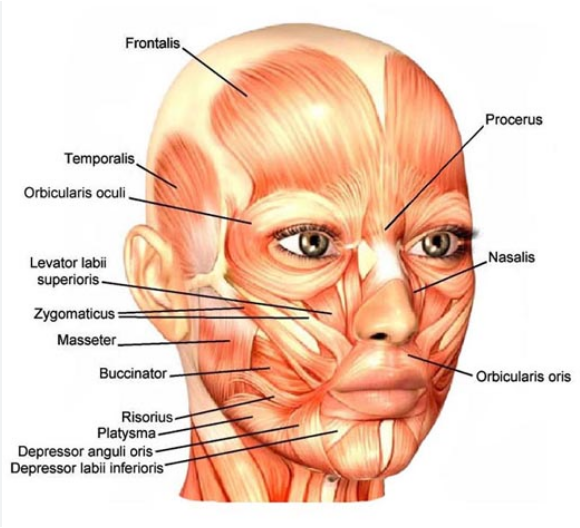
WHY DOES BOT0X NOT WORK ON FOREHEAD LINES?
Many people worry about having forehead lines and want to improve their appearance. Botox is often seen as a quick and easy solution for this problem, but unfortunately, it doesn’t always work. There are a few reasons why Botox may not be effective for forehead lines.
First, Botox works by relaxing the muscles that cause wrinkles. But the muscles in the forehead are some of the strongest in the face, so they may not be affected by Botox injections. Second, the skin on the forehead is thinner than on other parts of the front, so Botox may take effect slowly. Finally, forehead lines are often caused by sun damage, and Botox can’t reverse that.
Botox is ineffective for forehead lines because the muscles in that area are too strong. Botox works by temporarily paralyzing the muscles, but it cannot completely stop them from moving. That is why other treatments, such as fillers or lasers, maybe a better option for forehead lines.
WHY IS BOTOX GOOD FOR SWOLLEN HEAD?
There are many reasons why Botox is suitable for a swollen head. For one, Botox can help reduce the swollen area’s size. Additionally, Botox can help reduce the appearance of scars and wrinkles and improve the skin’s overall appearance.
Lastly, Botox is a safe and effective treatment that is minimally invasive and requires no downtime, allowing individuals to return to normal activities immediately after treatment.
Botox can be an excellent option for those experiencing a swollen head, as it can provide physical and cosmetic benefits.
BOTOX TREATMENT OF HORIZONTAL FOREHEAD LINE
The horizontal forehead line is a common condition that can be treated with Botox. This condition is caused by the overactivity of the muscles in the forehead, which can lead to the formation of lines and wrinkles.
Botox is a treatment that can be used to reduce the overactivity of the muscles in the forehead, which can help to improve the appearance of lines and wrinkles. Botox is an effective treatment that is FDA-approved for treating this condition.
During the procedure, a small amount of Botox is injected into the targeted muscles using a fine needle. The process is generally quick, taking about 15 minutes to complete, and there is minimal discomfort. Patients can resume their regular activities immediately after the procedure.
The effects of Botox typically take about 3-7 days to appear, and the results can last up to 4-6 months. After this time, the treatment must be repeated for continued results.
It is important to note that Botox is not a permanent solution to wrinkles and lines. However, with regular treatments, patients can achieve long-lasting results and maintain a youthful appearance.
IS JUVEDERM BETTER THAN BOTOX?
The quick response is that it depends on your individual needs and goals. Botox is typically better for wrinkles caused by muscle contractions, while Juvederm is better for filling in wrinkles caused by volume loss.
Here’s a more detailed breakdown of the pros and cons of each:
Botox:
– Pros:
* Reduces the appearance of wrinkles caused by muscle contractions
* Quick and easy procedure with minimal side effects
* Results typically last 3-4 months
– Cons:
* It might not be suitable for all types of wrinkles
* Results are not permanent
Juvederm:
– Pros:
* Reduces the appearance of wrinkles caused by volume loss
* Results can last up to 1 year
* Minimally invasive procedure
– Cons:
* May cause temporary pain, bruising, or swelling at the injection site
* Results may not be immediate and may require touch-ups
* Not suitable for all types of wrinkles or facial areas
* May be costly compared to other wrinkle treatments
THE LONG-TERM EFFECTS OF BOTOX INJECTIONS ON THE FOREHEAD
Botox injections are a popular cosmetic treatment for reducing the look of wrinkles and fine lines. But what are the long-term effects of Botox on the forehead?
Some studies have shown that Botox improves the forehead’s appearance over time. In one study, patients who received Botox injections every four months for two years significantly reduced the formation of wrinkles and fine lines.
However, there is still some debate on the long-term effects of Botox. Some doctors believe that the results of Botox on the forehead are temporary and that the wrinkles will eventually return. Others believe that Botox can help to slow down the aging process.
Some study participants reported experiencing headaches, pain, and tenderness at the injection site. Other side effects included nausea, flu-like symptoms, and temporary eyelid droop. In conclusion, additional study is required to establish the long-term effects of Botox on the forehead.
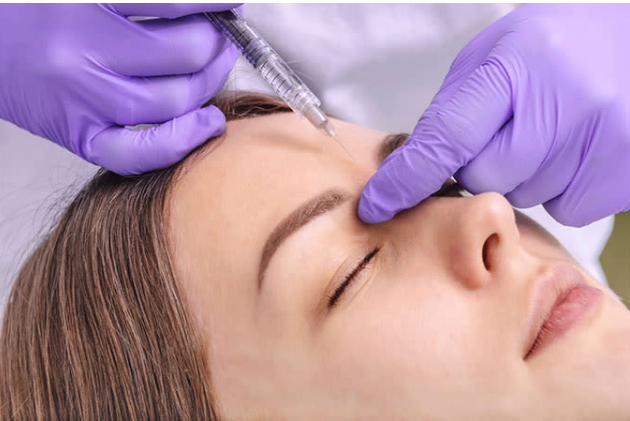
JUVEDERM vs. BOTOX WHICH TREATMENT WORKS BETTER FOR FOREHEAD WRINKLES
Both Juvederm and Botox are popular treatments for forehead wrinkles. But which one works better?
Botox temporarily paralyzes the wrinkle-causing muscles to work. On the other hand, Juvederm fills in the creases with hyaluronic acid.
So, which one is better? It depends on your individual needs and goals. If you want a temporary solution that will last for 3-4 months, then Botox is a good option. If you’re looking for a longer-lasting solution, Juvederm is a better choice.
Remembering that Juvederm is a more invasive treatment than Botox would be best. Juvederm requires a needle to be injected into the skin, while Botox only needs a hand to be injected into the muscle.
Juvederm and Botox can effectively reduce wrinkles’ appearance; however, they operate differently and have benefits and drawbacks. It’s critical to consult with a qualified and experienced healthcare provider to determine which treatment may be best for you based on factors such as your skin type and the severity of your wrinkles.
Ultimately, it’s up to you and your provider to decide which treatment will help you achieve your desired results.
WHY DO VERTICAL LINES APPEAR ON THE HEAD AFTER BOTOX?
One possible side effect of Botox is the development of vertical lines on the forehead. These lines are caused by the muscles contracting underneath the skin. Botox temporarily paralyzes the muscles to work and prevents them from contracting. However, in some cases, the paralysis may not be complete, which can result in the formation of vertical lines.
When we make facial expressions, the muscles in our face contract; over time, these contractions can cause wrinkles and lines in the skin. Botox is a popular treatment for wrinkles because it relaxes the muscles, which reduces the appearance of lines and wrinkles.
So why do vertical lines appear on the forehead after Botox? It’s likely because Botox is relaxing the muscles too much, which causes the skin to sag and the lines to become more visible. These lines often disappear after a few days as the Botox wears off.
WHAT CAUSES A HEAVY HEAD AFTER BOTOX?
There are various reasons for this; you might experience a heavy head after Botox. It could be due to the medication, which can sometimes cause muscle weakness. It could also be due to how Botox is injected, as injecting it too deeply into the muscles can cause bruising and inflammation.
Lastly, it could be due to the amount of Botox injected, as too much Botox can lead to difficulty moving the muscles in the treated area.
Most people who experience this side effect report that it goes away within a few days. Check-in with your doctor if you still have a heavy head after a week. They may recommend massage or other treatments to help relieve the sensation.
However, in rare cases, the heavy head could indicate a more severe problem, so it’s best to err on caution and get it checked.
DOES BOTOX MAKE YOUR FOREHEAD BIGGER
No, Botox does not make your forehead bigger. There is a common misconception that Botox can make your forehead bigger. However, this is different. When used, Botox temporarily paralyzes the muscles in the face. This may cause your forehead to appear larger since the muscles can’t contract, but the effect is temporary and will eventually wear off.
Additionally, Botox will not cause any permanent changes to the shape of your forehead. It is crucial to note that the results of Botox injections can vary depending on the technique and the skill of the person administering the injections.
Botox treatment can cause various adverse consequences, though none usually are significant. However, the first patients with Botox may find the side effects disturbing. Botox is often prescribed for the forehead because side effects such as swelling may be more prominent.
After Botox treatment, swelling is generally expected, but it is unlikely to improve after two days. Is there anything that causes swelling during Botox?